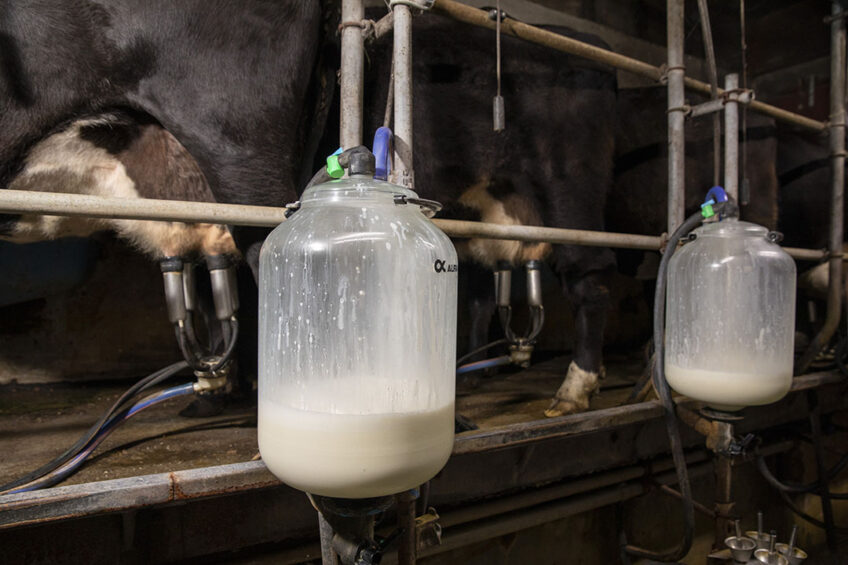Bulk milk testing for zoonotic disease surveillance

Infectious zoonotic diseases transmissible through milk such as Q fever, brucellosis, salmonellosis, and tuberculosis pose considerable public health risks to those who consume raw milk, and cause major economic losses in dairy herds worldwide.
A core requirement of a successful surveillance programme in dairy herds is testing the aggregated bulk milk samples to establish baseline levels against which effects of intervention efforts can be measured.
Q Fever
Q fever is caused by Coxiella burnetii, which is an obligate intracellular bacterium with a very high infection capacity. Cows are one of the main reservoirs of Coxiella burnetii and this bacterium is most abundant in birth products, urine, faeces, and milk of infected animals.
Transmission routes to human include inhalation of aerosolised bacteria from the placenta, faeces, and urine of infected animals, or ingestion of contaminated raw dairy products, transfusion of blood products, sexual transmission, and professional exposure, as in the case of pathologists or microbiologists. Spontaneous abortions, endometritis, mastitis, and infertility are the signs of Q fever in infected cows. In humans, Q fever can manifest as an acute disease usually as a self-limited febrile illness, pneumonia, hepatitis, or a persistent focalised infection with endocarditis.
Brucellosis
Brucellosis is one of the most frequent zoonotic diseases in many parts of the world. In cattle, brucellosis is caused by Brucella abortus which can be easily transmitted to humans through contaminated food and dairy products, occupational contact, inhalation of infected aerosols, and the contamination of mucous membranes or open wounds with foetal fluids. Brucellosis leads to significant economic loss due to stillbirths, reduced calving percentages, medical costs, births of weak calves, and culls due to infertility.
Tuberculosis
Mycobacterium caprae and Mycobacterium bovis cause tuberculosis in dairy cows and humans. The main route of tuberculosis transmission in dairy cows is via aerosol by the droplet nuclei generated during coughing and sneezing. Humans may be also infected through milk, dairy products, and by eating meat from infected animals.
Salmonellosis
Salmonellosis is one of the most common foodborne bacterial diseases in the world. Salmonella enteritidis, Salmonella typhimurium, and Salmonella bongori are normally found in the intestines of humans and dairy cows, as they are the main reservoir of these bacteria. Infection in humans occurs after drinking contaminated water and ingesting contaminated cattle milk and meat, and after direct contact with infected animals, their faeces, and the environment.
Bulk tank milk samples
A bulk tank milk sample represents 2 or more lactating cows in the herd at a specific location and time and it can be collected without animal restraint. Bulk tank milk samples provide an economical, convenient, and timely approach to detect specific pathogens and to estimate disease prevalence at the herd level.
Application of aggregate sampling in dairy herd surveillance programmes has increased along with developments in diagnostic technology such as nucleic acid-based assays and antibody assays. Bulk tanks are designed to cool down cow milk (4.4-7°C) within 2 hours of collection and maintain this range thereafter.
Regardless of the collection schedule, bulk tanks must be emptied, cleaned, and sanitized at least every 72 hours. Bulk milk tanks need to be agitated for at least 10 minutes after which samples are collected aseptically from the top of the tank using a sterile pipette, syringe, or sanitised dipper.
Bulk milk testing limitations
In bulk milk testing, the milk of infected lactating cows gets diluted with milk from uninfected cows, which in turn lowers the sensitivity of this method compared with animal-level testing. In addition, factors including significant variability in terms of disease-positive herd definition, test result interpretation, lack of specific cut-off values for bulk milk samples, test targets such as antigen or antibodies, manufacturers, and herd confounding factors such as vaccination status affect the interpretation of bulk milk testing results.
Conclusion
An increase in the size of a dairy herd enhances the risk of pathogen endemicity. It is therefore essential to set up surveillance programmes to reduce infection disease occurrence. Testing bulk milk samples is a convenient and informative way to monitor herd health and current milk quality. Evaluation of multiple bulk milk samples collected over many months provides an alert to the presence of new, recurrent, and periodic herd infections.
Join 13,000+ subscribers
Subscribe to our newsletter to stay updated about all the need-to-know content in the dairy sector, two times a week.










